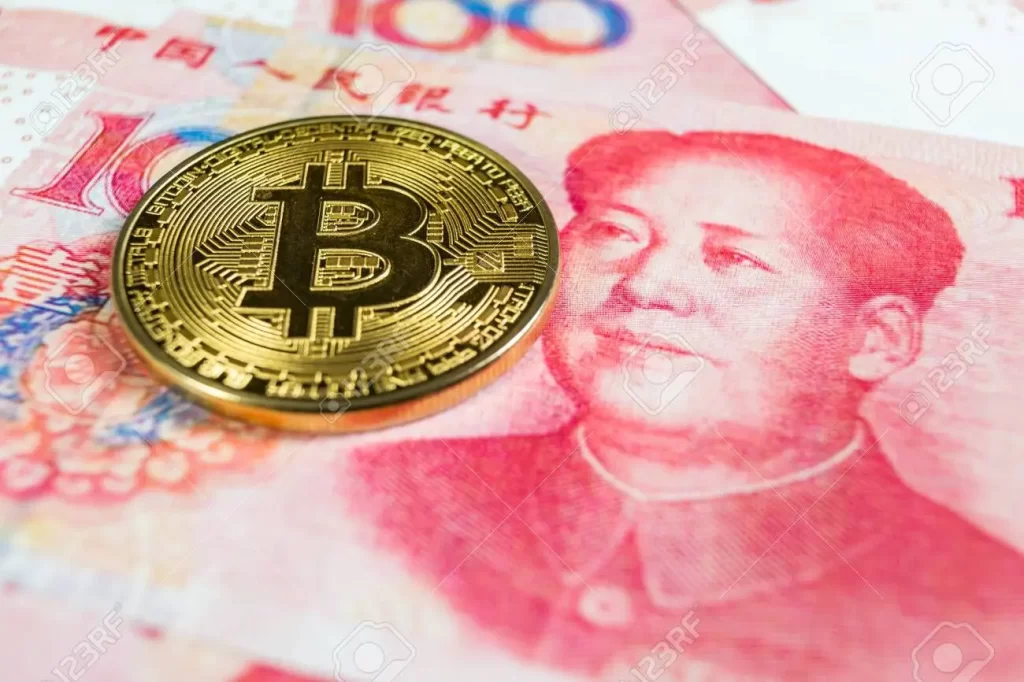This comprehensive study embarks on an exploration of China’s intricate past and its transformation into a global economic powerhouse, the role of its charismatic and decisive leader, Xi Jinping, in shaping the modern Chinese landscape, and the intriguing evolution of its monetary system, the Yuan. We delve into the historical milestones that shaped the country, from the ancient Xia Dynasty through to the current Communist regime, and examine how these historical contexts have informed China’s economic, political, and social trajectory. We then turn our focus to Xi Jinping, assessing his background, leadership style, policy initiatives, and their far-reaching impacts on both domestic and global arenas. Lastly, we navigate the complex world of currency, considering the internationalization of the Yuan and its potential to compete with established global currencies such as the U.S. Dollar, and emerging digital currencies like Bitcoin. As China continues to assert its influence on the world stage, the dynamics of this competition and the potential implications for global economic power structures warrant close scrutiny. This body of work seeks to provide a comprehensive understanding of these multi-faceted dynamics, shedding light on China’s past, present, and potential future trajectory.
China has a more than 5,000-year-old history that is both lengthy and intricate. China’s history has been influenced by a wide range of political, social, and cultural influences, from the early civilizations that formed along the Yellow River in the Bronze Age to the contemporary People’s Republic of China.
Around 2100 BCE, along the Yellow River, the oldest civilization in China is known to have arisen. Although there isn’t much physical proof of the Xia Dynasty’s existence, it is known by this name. A writing system was initially developed by a Chinese civilisation during the Shang period, which ruled from from 1600 BCE to 1046 BCE. This period was better known for its written records. Bronze casting and religious practices, such as ancestor worship and divination, were well-known features of the Shang Dynasty.
The Zhou Dynasty (1046 BCE–256 BCE), which succeeded the Shang Dynasty, was a time of notable expansion and cultural development. Eastern Zhou (771 BCE – 256 BCE) and Western Zhou (1046 BCE – 771 BCE) are the two divisions of the Zhou Dynasty. While the Eastern Zhou was characterized by the division of authority and the development of regional states, the Western Zhou was distinguished by the consolidation of power by the Zhou monarchs. Many of the key books of Chinese philosophy from this era, including the Tao Te Ching and the Analects of Confucius, were written.
The Qin Dynasty began to rule China in 221 BCE, and its leader, Qin Shi Huang, was crowned the country’s first emperor. The Qin Dynasty is renowned for building the Great Wall of China and for attempting to harmonize writing and money. The Han Dynasty, which ruled from 206 BCE to 220 CE, replaced the short-lived Qin Dynasty.
Significant growth and cultural development occurred during the Han Dynasty. A significant commerce route from China to the Mediterranean region at the time was constructed, the Silk Road. In addition to emphasizing Confucianism, the Han Dynasty developed a system of education and civil service examinations that would influence Chinese culture for generations to come.
A number of dynasties, including the Tang (618 CE – 907 CE) and Song (960 CE – 1279 CE) dynasties, which were renowned for their aesthetic and cultural accomplishments, followed the Han Dynasty. Buddhism was made a significant religion in China under the Tang Dynasty, and Chinese poetry saw a period of great growth. The Song Dynasty is remembered for its innovations in science, technology, and trade.
In China, the Ming Dynasty (1368 CE – 1644 CE) was characterized by isolationism and cultural conservatism. The Ming Dynasty is renowned for building the Forbidden City and attempting to reduce foreign influence in China. Although the dynasty also saw a new merchant class emerge and experience substantial economic expansion.
China’s final imperial dynasty was the Qing Dynasty (1644 CE – 1912 CE). The Manchu people, who overthrew the Chinese government and ruled as its emperors, founded it. The construction of a centralized administration and extensive territorial expansion were characteristics of the Qing Dynasty. However, the dynasty was also characterized by graft and internal conflict, which aided in its eventual demise.
Under Sun Yat-sen’s direction, the Qing Dynasty was destroyed in 1912, and the Republic of China was subsequently created. Political unrest and power struggles between a number of factions, including as the Nationalists (headed by Chiang Kai-shek) and the Communists (led by Mao Zedong), were prominent throughout the early years of the republic.
The Chinese Civil War was won by the Communist Party of China in 1949, and Mao Zedong became the head of the new People’s Republic of China. Early social and economic reforms in the People’s Republic included the collectivization of agriculture and the construction of a centralized planned economy.
The Cultural Revolution (1966–1976) and the Great Leap Forward (1958–1961), on the other hand, brought about major social and economic upheaval, resulting in the deaths of millions of people and severe damage to China’s cultural heritage.
China has undergone major economic change, moving from a planned economy to a market one, since the late 1970s. China now has one of the greatest economies in the world as a result of this substantial economic expansion. China has been under fire for its record on human rights and how it treats minorities like the Uighurs in Xinjiang, yet its authoritarian political system still prevails.
One of the most influential people in the world right now is President Xi Jinping. Since 2012, he has served as the CPC’s general secretary, and since 2013, he has presided over the People’s Republic of China (PRC). Significant economic, social, and political changes have taken place in China under his leadership. This essay seeks to offer a thorough examination of Xi Jinping’s history, leadership style, policies, and effects on China and the rest of the globe.
Beijing was the place of Xi Jinping’s birth on June 15, 1953. He was born to Xi Zhongxun, a revolutionary figure who was instrumental in the founding of the People’s Republic of China. Because Xi was raised in a wealthy setting and was also exposed to the turbulent events of the Cultural Revolution, his father’s political background had an impact on his upbringing. After becoming a member of the Communist Party of China (CPC) in 1974, Xi Jinping worked his way through the organization, holding a number of regional and provincial roles before being elected governor of Fujian Province in 1999. Before being selected to the Politburo Standing Committee in 2007, he later served as the Party Secretary of Shanghai Municipality and Zhejiang Province.
Pragmatic, aggressive, and centralized best describe Xi Jinping’s leadership style. He has advocated for reform and emphasized the need to revitalize China and advance the “China Dream.” Including anti-corruption campaigns, initiatives to combat poverty, and infrastructure improvement, he has started a number of ambitious economic and social reforms. He has also highlighted how crucial it is for China to bolster its armed forces and enforce its sovereignty over the South China Sea.
Additionally, Xi Jinping has consolidated authority, solidifying his status as China’s top leader. He has made changes to both the Party and the government, and he has started initiatives to advance ideological adherence and Party allegiance. Additionally, by banning online and media content that is critical of the Party or his leadership, he has tightened his grip on power.
Economic and social reforms, foreign policy, and governance are the three core focuses of Xi Jinping’s policies.
A number of social and economic changes spearheaded by Xi Jinping are intended to encourage sustainable and balanced growth. He has worked to lessen China’s reliance on investment and exports while emphasizing the value of innovation and entrepreneurship. In order to encourage more responsibility and openness in politics and business, he has also started anti-corruption efforts.
With the goal of elevating China’s position and influence around the world, Xi Jinping’s foreign policy has been defined by a more forceful approach. He has stressed the significance of the Belt and Road Initiative, a significant financial and infrastructure project meant to strengthen linkages between nations in Asia, Africa, and Europe. Additionally, he has intensified China’s military presence abroad and pursued territorial conflicts in the South China Sea.
The Party and the government have been reorganized under Xi Jinping, consolidating authority and boosting centralization. In addition to tightening his grip on the media and the internet, he has initiated programs to encourage Party allegiance and ideological conformity. Although he has emphasized the value of “rule by law,” he has also taken tough measures against those who violate human rights and voice dissent.
The globe and China have benefited much from Xi Jinping’s leadership. On the one hand, his policies have significantly advanced China’s economy and society, making it a more affluent and powerful country. For instance, poverty levels are down, and China is becoming a global innovator in technology. The emphasis on Party allegiance, ideological conformity, and control over the media and the internet, on the other hand, has also been questioned in his policies. Concerns have been generated by China’s expanding military presence and territorial disputes in the South China Sea among regional nations and the international community.
Initiatives of Xi Jinping’s foreign policy, including as the Belt and Road Initiative, have drawn criticism for their lack of transparency and propensity to trap developing nations in debt. Concerns regarding China’s violations of human rights, notably how Uighur Muslims are treated in Xinjiang, have been expressed by critics.
The People’s Republic of China uses the Chinese Yuan (CNY) as its official currency. The Yuan, the fundamental unit of the Renminbi, is also a common term for Chinese money, particularly in foreign contexts. In China, the term “Renminbi,” which means “the people’s currency,” is frequently used.
The Yuan was originally made available in 1889 as a silver currency that was identical to the conventional unit of the same name that had been in use during the imperial dynasty and was equal to one tael of silver. A year prior to the founding of the People’s Republic of China, in 1948, the People’s Bank of China launched the present Yuan.
One, five, ten, twenty, fifty, and one hundred Yuan notes are available in the Renminbi (Yuan) currency. Along with one and five Jiao coins, there are also one, two, and five Jiao notes (10 Jiao equal one Yuan). Additionally, there are lesser denominations known as Fen (100 Fen equal one Yuan), albeit these are rarely utilized due to their poor worth.
The Chinese government’s capital controls prevent the Yuan from being completely convertible to foreign currencies on the open market. As an alternative, the People’s Bank of China establishes a daily exchange rate for the Yuan against a basket of the most significant trading partners of China. The Yuan is permitted to trade freely on the foreign exchange markets, but only within a certain range.
For a number of years, China has pushed for the internationalization of the Yuan, which entails encouraging its usage in global trade and finance. In order to encourage the use of the Yuan in economic operations, particularly in Asia, the Chinese government has arranged various bilateral currency exchange agreements with other nations.
The Renminbi was a part of the International Monetary Fund’s (IMF) 2016 basket of Special Drawing Rights (SDR) currencies, which the IMF uses to supplement the official reserves of its member nations. The inclusion of the Renminbi was considered as an important step in its internationalization and an acknowledgement of China’s significance in the global economy.
China’s effort to create a digital economy is larger and is fueled by technological breakthroughs, economic planning, and global trade considerations. China’s experience, as one of the first developed nations to create a state-backed digital currency, provides important insights into the advantages and disadvantages of central bank digital currencies (CBDCs).
In 2014, the People’s Bank of China (PBOC) started researching digital currencies after realizing the potential advantages and revolutionary potential of blockchain technology and digital currencies. The development of private digital currencies like Bitcoin and the expansion of the use of online payment systems in China, such Alipay and WeChat Pay, had an impact on the DCEP project over time.
The DCEP is a type of the yuan that is issued as legal tender by the PBOC; it is not a cryptocurrency or a stablecoin. Contrary to decentralized cryptocurrencies, the DCEP is centrally managed, enabling the PBOC to retain control over monetary policy. The scheme has two levels: first, the PBOC issues commercial banks with DCEP, and these banks subsequently give the digital currency to the general population.
Since 2020, pilot programs have been operating in a number of Chinese cities as part of the DCEP’s staged rollout. The experiments were designed to examine DCEP’s practical use, security, and potential economic effects. population education campaigns and the distribution of DCEP through “red envelope” lotteries are just two strategies that have been used to encourage adoption by the general population.
By promoting financial inclusion, payment efficiency, and giving the PBOC more precise control over monetary policy, the DCEP has the potential to have a huge impact on China’s financial landscape. As opposed to cash, it enables the central bank to track every transaction, which creates privacy problems.
The DCEP can ease cross-border transactions globally and lessen dependency on the global dollar payment system. Additionally, it might raise the yuan’s worldwide stature and give it a chance to challenge the US dollar’s hegemony in the world of banking. However, the internationalization of DCEP also brings with it difficulties and dangers, such as legal issues, the possibility for abuse, and opposition from other nations.
The gradual internationalization of the Chinese yuan and its potential to become a dominant global currency has been the subject of increasing debate among economists and policymakers. In recent years, several countries, notably those with strong economic ties to China, have begun to shift away from the U.S. dollar, opting instead to conduct bilateral trade in yuan. This trend has been facilitated by China’s initiatives, such as the Belt and Road Initiative and the establishment of yuan clearing banks in various countries, which are aimed at promoting the use of the yuan in international transactions. Concurrently, the meteoric rise of Bitcoin and other cryptocurrencies has sparked discussions about their potential to compete with traditional fiat currencies, including the yuan and the dollar. China’s introduction of the Digital Currency Electronic Payment (DCEP), the world’s first state-backed digital currency, could further enhance the yuan’s global standing by streamlining cross-border transactions and reducing reliance on the U.S. dollar-based global payment system. However, it also signals China’s acknowledgement of the growing influence of digital currencies like Bitcoin. The potential of the yuan and Bitcoin to unseat the U.S. dollar as the world’s dominant currency is contingent upon several factors, including China’s ability to maintain economic stability, liberalize its financial markets, instill confidence in the yuan as a store of value, and successfully navigate the regulatory and technological challenges associated with digital currencies.






